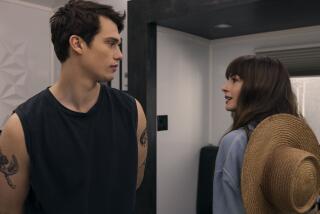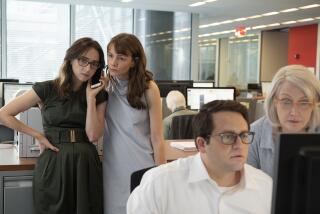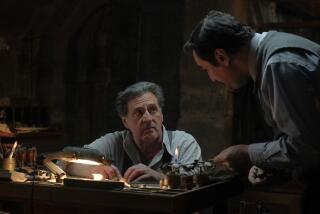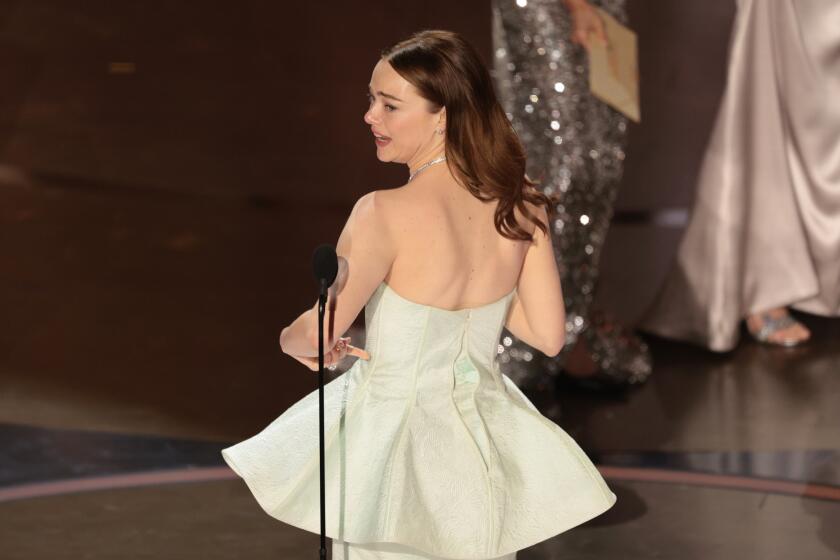Pushing the Envelope With Visual Effects : Film: New technology enables specialists to put almost any image that a writer can describe on the screen.
Until recently screenwriters were careful to check with special effects experts before describing imaginative images on paper. They didn’t want to write a scene that couldn’t be shot.
Not today. As Richard Edlund, the Oscar-winning visual effects supervisor of “Raiders of the Lost Ark,” puts it: “Now virtually anything can be done (visually). If you can describe it, you can do it.”
Yet Jonathan Erland of the special effects house Apogee Inc. says newer doesn’t always mean better. “There are two versions of ‘King Kong.’ The remake enjoyed a lot of advanced technology unavailable to the original film makers. Yet I don’t know anybody who prefers the remake. The original had a much clearer vision of what it was about.”
The Academy of Motion Pictures Arts and Sciences has no visual effects branch, leaving the selection of Oscar nominees up to a committee made up of art directors, cinematographers and others recognized as experts in special effects.
Here are this year’s visual effects nominees and what some experts in the field think of them.
John Bruno, Dennis Muren, Hoyt Yeatman and Dennis Skotak.
“The Abyss.”
“Two radically different environments--water and air--were cut seamlessly together,” notes academy member Bill Taylor, co-owner of Illusion Arts, the company that did effect work on “Glory” and “Honey, I Shrunk the Kids.” “Smoke was used to simulate underwater in certain sequences, such as when (the divers) came upon the crashed sub. These had to be combined with miniature underwater scenes and full-scale underwater scenes.”
To create the underwater illusions, veteran special effects expert Linwood G. Dunn says the visual effects people combined new techniques with the refinement of known technology. Relying on information supplied by the film’s producers, Dunn notes that the film contained 290 effects shots covering 21 minutes of film.
“Working with full scale all the way down to one-eighth-inch models required all the tricks in (the visual effects) bag,” Dunn says.
One effect that excited academy members was the image of the underwater aliens. “The alien creatures and their minisubs were completely transparent,” Taylor says. “All the working parts were visible. That’s never been attempted before.”
The computer-generated water tendril that snakes through the ship’s interior and touches actress Mary Elizabeth Mastrantonio’s face is another example of the film’s “trailblazing.”
Richard Conway and Kent Houston.
“The Adventures of Baron Munchausen.”
“The film charts no new ground in terms of technology,” says Taylor. “But it uses every existing technology--mechanical effects, photographic effects, models, miniatures--and exploits them beautifully.”
Erland, who worked on the original “Star Wars,” says “Munchausen” reminded him of “Star Wars.”
“There’s been a tendency since the first ‘Star Wars’ to get a little pretentious about effects. The later (‘Star Wars’) films were more proficient, but the first one had a sense of panache and the sheer joy of storytelling. We got that back with ‘Munchausen.’ ”
Dunn says the film included more than 275 optical effects, involving the photographing and combining of multiple images. “And all were vitally important to the story, which is a major factor in our voting.”
Ken Ralston, Michael Lantieri, John Bell and Steve Gawley.
“Back to the Future Part II.”
Taylor says the visual effects producers of this film took classic techniques and, in Taylor’s words, “pushed them further than ever before.”
The split-screen technique, for instance, allows an actor to play multiple roles. In one shot in this film, however, Michael J. Fox played four roles while the camera moved.
“Often when you do an effect, the camera locks up and nothing moves until after the effect,” says Edlund. “An audience detects that kind of rigidity.”
Here, split-screen and movement were achieved simultaneously through a Vista Glide motion picture dolly that can repeat moves over and over again.
“Motion control cameras have been used before, but never as extensively,” Edlund says. “They did nervy things too, like when Michael J. Fox 2 grabs a cap off Michael J. Fox 1’s head.”
“That’s a case where technology facilitates a performance,” adds Erland. “To most people in the effects business, the ability to enhance the storytelling is most appealing.”
“ ‘Back to the Future’ required the construction of 30 models intricately detailed down to each nut and bolt,” says Dunn. “The flying cars in the aerial freeway ran from 3 inches to 2 feet. One shot required compositing about 100 effect elements.”
Creating the hoverboard sequences, in which Fox skates through the air, entailed a massive mechanical effects job, involving huge cranes with complex wire rigs built to fly actors safely around.
Another classic technique pushed to the limits involved a night shot of the flying car. It’s a seamless cut from a miniature to a full-sized car.
“The car is flying high in the air in the distance,” recalls Taylor. “As the camera pans, the car flies behind a lamp post and the real actor comes out in one continuous shot.
“In the first part (of the shot), they’re using a half-foot-long model car. The second half is a full-sized car with actors. When the car passes behind the lamp post, they switch. The difficulty of making it match so perfectly is just breathtaking to professionals.”
More to Read
Only good movies
Get the Indie Focus newsletter, Mark Olsen's weekly guide to the world of cinema.
You may occasionally receive promotional content from the Los Angeles Times.






